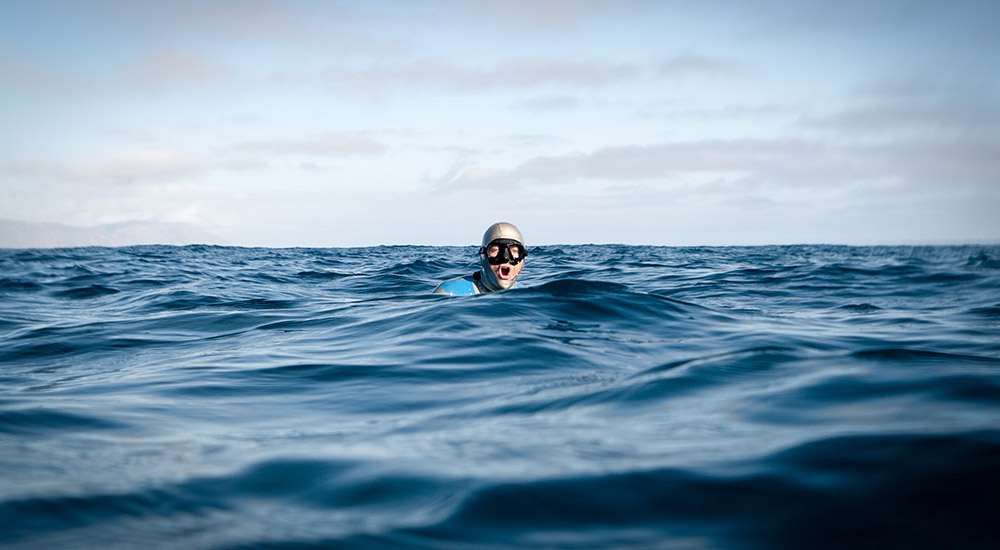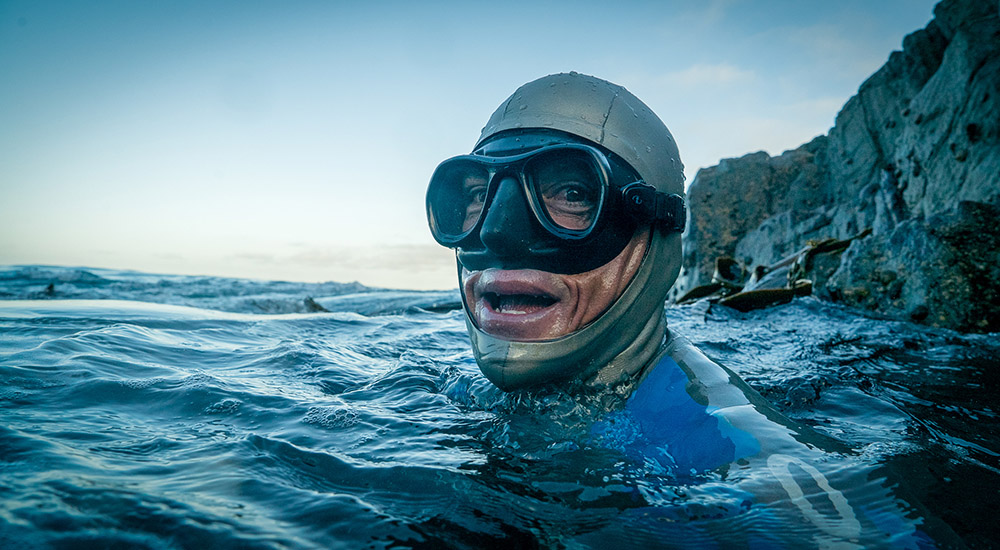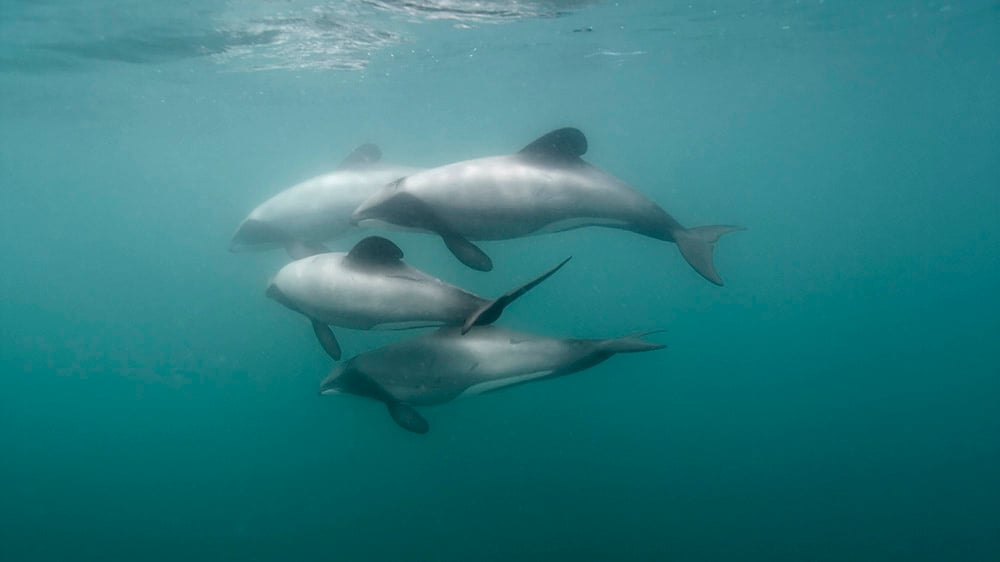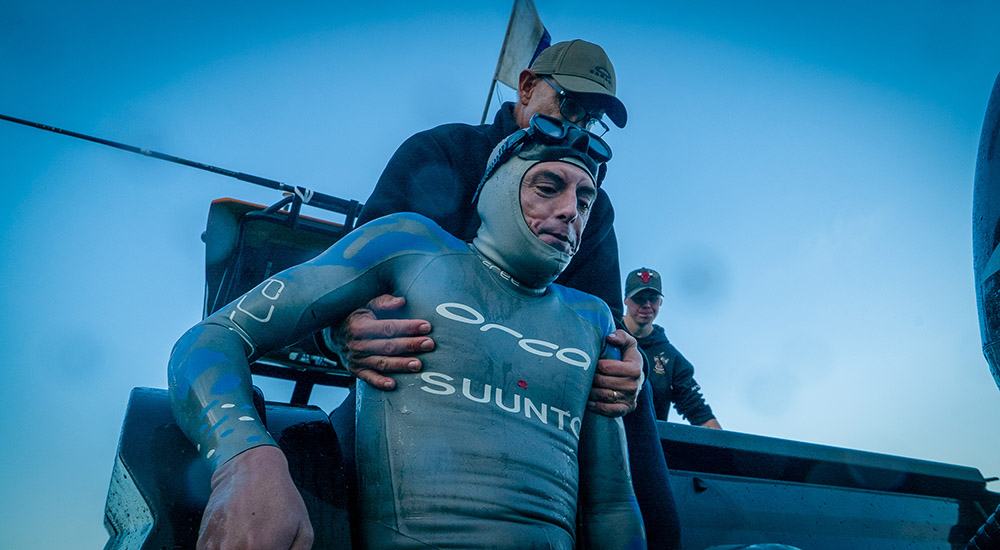New Zealander William Trubridge has emerged from the Cook Strait jubilant after becoming the first person to complete a channel crossing by swimming underwater.
Trubridge used his incredible breath hold diving ability to swim under the surface, like a dolphin, before surfacing, and diving under again, all the way across. He followed conventional channel crossing rules, such as not resting on a boat or float, except for two changes: all propulsion had to take place underwater on a breath hold, and the use of a wetsuit and fins/monofin was permitted.

“We had strong currents and cold water patches, rough seas, it was like being in a washing machine at times,” he says. “I was getting cramps, cold, blisters, the usual stuff. But I still feel like I got off lightly; there were so many things that could have been different, and for each one of those I probably wouldn’t have made it. I’m feeling a lot of relief and jubilation at the end to make it.”
The Cook Strait separates New Zealand’s North and South islands, and is considered one of the world’s most unpredictable and treacherous stretches of water. At it narrowest points, it’s a mere 22 km across. But what it lacks in lengths it makes up for in fierceness: wild unpredictable weather and powerful currents, chilly water that can cause hypothermia, stinging jellyfish and a population of curious sharks.

“Crossing the Cook Strait is like trying to hit a bullseye, with the target on the back of a bucking bull,” Trubridge says. “The currents are so powerful, and reversed direction at least three times during the swim, mean that hitting the closest piece of land (Perano Head) required constant calculations and course corrections. I’d heard many tales of channel swimmers coming within 500 m of land and battling against currents for another four hours before succumbing to cold and fatigue without reaching the shore.”
The decision to attempt the first “human aquatic crossing” was made suddenly when a good weather window coincided with advantageous low tides. Trubridge had previously done only a few six to eight-kilometer training swims to prepare. “I knew I wasn’t really built for this kind of thing,” he says. “My sport (depth diving) is primarily anaerobic fitness, so I don’t have well developed aerobic muscle fibers. My body type is pretty much the exact opposite of what you need to have for this kind of cold water swimming.”

Thoughts about the plight of New Zealand’s Hector’s and Maui’s dolphins, and wanting to save these precious and intelligent animals, kept Trubridge moving forward despite the challenging conditions and 15-18 degree water. “The main reason for doing it has always been to bring more awareness to the situation with the dolphins,” Trubridge says. “These are the two subspecies of New Zealand dolphin that occupy the North (Maui's Dolphins) and South (Hector's Dolphins) islands. Both subspecies are threatened by extinction.”
Trubridge is calling on the New Zealand Government to act quickly to save the dolphins. The fishing industry must be better regulated to protect the dolphins. He invites divers around the world to put pressure on the New Zealand Government to act before it’s too late.

“I made it across about five times slower and with five times as many dives as it would take a Hector’s Dolphin to make the same crossing, but it showed that if we can swim like a dolphin between our two islands then they too should have the freedom to do the same.”
WATCH NOW: Will Trubridge crosses Cook Strait "like a dolphin"